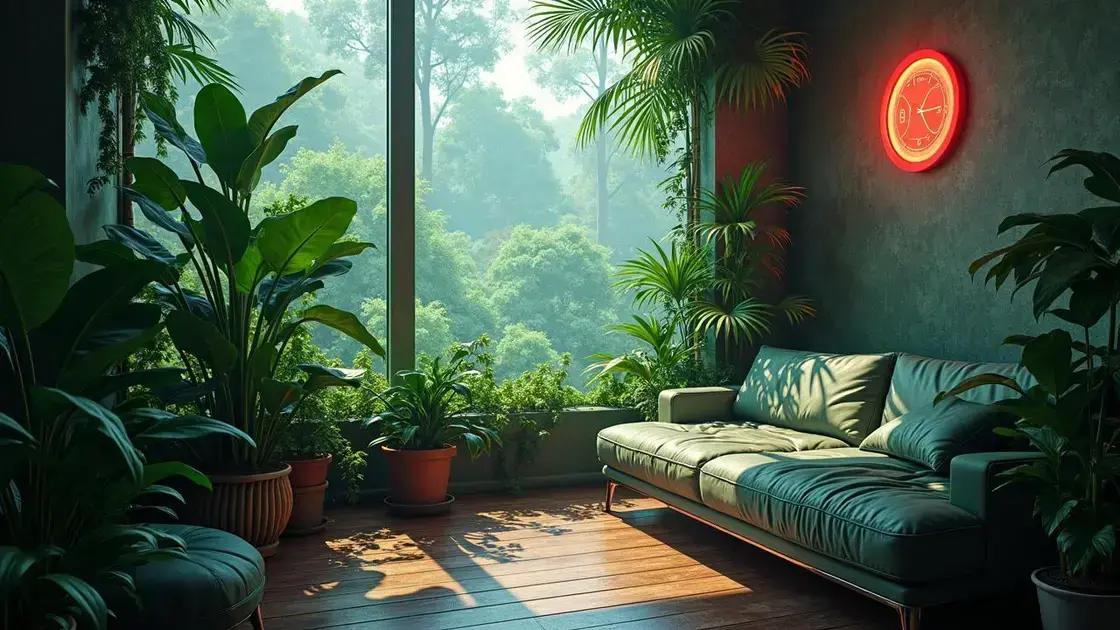How to Care for a Philodendron Plant: 5 Essential Tips You Need
How to care for a philodendron plant effectively can transform your indoor space into a lush oasis. These beautiful plants not only bring life to your home but also improve air quality. Learn the essential tips that will help your philodendron flourish and become the centerpiece of your plant collection.
Table of Contents
ToggleEssential tips for watering your philodendron
How to care for a philodendron plant means understanding its watering needs, crucial for maintaining its vibrant health. Philodendrons thrive in environments where their watering requirements are adequately met, and getting this right can prevent potential problems such as root rot or leaf drop. Below are essential tips on how to water your philodendron effectively to keep it in top shape.
Understanding philodendron watering needs
- Philodendrons prefer well-draining soil that can retain some moisture.
- Water when the top inch of the soil feels dry to the touch.
- Reduce watering frequency during the winter months when the plant’s growth slows down.
Steps to water your philodendron
- Check the soil moisture using your finger.
- If dry, water the plant thoroughly until water drains from the bottom.
- Allow the pot to sit in a saucer for a few minutes to prevent waterlogging.
Avoiding common mistakes
- Overwatering is the most common issue, which can lead to root rot. Always ensure there is good drainage in your pot.
- Using cold water can shock the plant; it’s best to use room temperature water.
- Neglecting to adjust watering when the seasons change affects plant health.
For those exploring indoor gardening techniques, you might find helpful tips in this exploring indoor gardening techniques guide.
Signs of a thirsty or overwatered philodendron
Keep an eye out for the following indicators:
| Condition | Signs |
|---|---|
| Thirsty | Droopy leaves, dry soil surface. |
| Overwatered | Yellowing leaves, mushy roots, bad odor. |
Monitoring your philodendron’s watering process is vital for their overall health and longevity. By setting a consistent watering routine and learning to read your plant’s signals, you’ll enjoy a flourishing indoor garden.
Best soil and light requirements for philodendrons

Best soil and light requirements for philodendrons are essential considerations to promote healthy growth and longevity. The right combinations ensure your philodendron thrives in your indoor environment. Below are the detailed recommendations for creating the ideal conditions for your beloved plant.
Understanding soil types for philodendrons
Philodendrons appreciate well-draining soil that retains adequate moisture. Here are some key components:
- Peat moss: Retains moisture while allowing for good aeration.
- Pine bark: Enhances drainage and adds organic matter.
- Perlite or vermiculite: Improves aeration and moisture retention.
A common mix might include two parts potting soil, one part perlite, and one part peat moss for optimal results.
Light requirements for philodendrons
Philodendrons thrive in bright, indirect light, but some varieties can adapt to lower light conditions. To create the best light environment:
- Place your plant near a north or east-facing window for optimal light exposure.
- Avoid direct sunlight, which can scorch the leaves.
- Rotate your philodendron every couple of weeks to ensure even growth.
Signs of improper soil or light conditions
Watch for these signs to adjust your care:
| Condition | Signs |
|---|---|
| Poor soil quality | Yellowing leaves, stunted growth. |
| Too little light | Stretching stems, small leaves, leaf drop. |
| Too much light | Sunburned leaves, crispy edges. |
Adapting soil and light conditions can dramatically influence the health of your plant. For those looking to enhance their gardening skills, check out exploring indoor gardening techniques to learn more.
Common pests and how to keep your philodendron safe
Common pests and how to keep your philodendron safe can significantly impact the health of your plant. Identifying these pests early and implementing effective preventive measures can help ensure your philodendron thrives. Below are the most common pests affecting philodendrons and how to manage them.
Identifying common pests on philodendrons
Several pests are attracted to philodendrons, including:
- Spider mites: Tiny, spider-like creatures that create webbing on leaves.
- Aphids: Small, green insects that suck sap from new growth.
- Mealybugs: White, cottony masses found in leaf joints.
- Scale insects: Small, flat bugs that stick to stems and leaves.
Effective ways to manage pests
To keep your philodendron safe from these pests, consider the following strategies:
- Regularly inspect your plant for any signs of infestation.
- Use insecticidal soap or neem oil for treatment.
- Maintain humidity levels, as pests like spider mites thrive in dry conditions.
- Isolate affected plants to prevent pests from spreading.
Prevention tips for a healthier philodendron
Implement these preventive measures to minimize pest problems:
- Keep your philodendron clean by wiping leaves to remove dust and debris.
- Rotate your plants regularly to improve air circulation.
- Ensure proper watering and avoid over-fertilizing, which can attract pests.
If you want to broaden your gardening knowledge, consider exploring indoor gardening techniques that can provide further insights.
In conclusion
Caring for a philodendron is a rewarding experience that enhances your living space while providing health benefits. By understanding their watering needs, light conditions, soil requirements, and how to protect them from common pests, you can ensure your philodendron thrives. With the right knowledge and a little attention, your plant can bring lasting beauty to your home. For additional insights and tips on enhancing your indoor garden, don’t hesitate to explore more resources!

